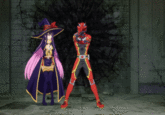Anime / Manga
About
Anime is the Japanese abbreviated pronunciation of "animation", and Manga is a Japanese term used to refer to any comic. In English-speaking countries, anime refers to a style of animation originating in Japan, characterized by colorful graphics and shows often featuring themes intended for an adult audience. Manga has been mainly associated with the comics made in Japan and the style they often use. The intended meaning of the word 'anime' sometimes varies, depending on the context.
History
Manga
Although manga can be tracked to the 18th century, modern manga was born during United States' occupation of Japan after WWII.
Anime
Anime first began in the early 20th century, when Japanese filmmakers experimented with the animation techniques also pioneered in France, Germany, the United States, and Russia. The oldest known anime in existence first screened in 1917 – a two-minute clip of a samurai trying to test a new sword on his target, only to suffer defeat. After the success of the Disney corporations "Snow White and The Seven Dwarfs" in 1937, many Japanese animators were heavily inspired by it, and adopted many of its styles while developing their own. In the 1960s, manga artist and animator Osamu Tezuka, often heralded as one of the grandfathers of the industry due to his work on series such as Astro Boy and Kimba The White Lion, adapted many Disney animation techniques to help reduce costs and limit the number of frames in productions. The first-ever anime tv series to air in Japan was Otogi Manga Calendar, and aired from 1961 to 1964.
In The West
Anime did not start to get popular in the west until the late 1980s/early 1990s, after the airing of the cult film Akira. Despite the film receiving a limited release in the U.S. due to the perceived lack of marketability, it became popular within many circles and is considered the staple for anime in the west. As well as Akira, many works by Studio Ghibli often received success within the west, due to backing by Disney. In the late 90s, anime for children began to make their mark in the United States thanks to the success of shows like Pokémon and Dragon Ball.
More adult-themed anime began growing popular when shows like Cowboy Bebop started airing on Adult Swim starting on September 2, 2001. The show became a breakout success, and helped lead to other anime airing on TV in America and gaining a popular western fandom. Popular shows in the west include Fullmetal Alchemist, Soul Eater, Sword Art Online and Attack on Titan.
Online Relevance
Anime and manga have a long history online, spanning across numerous websites and communities. Online streaming services have developed into the primary source for many anime fans, with many websites being created in order to host fan-subbed anime. Additionally, a number of legal anime websites have also developed, offering users a way to watch officially licensed anime, most notably Crunchyroll[1] and FUNimation[2]. A number of online forums dedicated to anime have also developed over the years, such as Anime News Network,[3] an online Anime and Japanese media news site, and My Anime List,[4] a forum dedicated to anime and manga. A number of other websites also have their own dedicated anime boards, such as 4chan's /a/ board[5] and r/Anime[6] on Reddit.
Fandom
There is massive global fandom for anime, with large communities in both the physical and digital realms. Anime is often a source of inspiration for cosplayers, and conventions related to anime are common in both the east and west.
There are several negative terms for anime fans, including Otaku, which means an obsessive anime fan with no social life, and Weeaboo, which means a non-Asian fan who is obsessed with Japanese culture, particularly anime, to an obsessive degree. Additionally, some tropes in anime and anime fandom such as Moe characters, Lolicons and fan service have given the genre a negative reputation among some critics. Anime tropes such as large-chested characters have been parodied in memes including New Anime Plot and Anime Tiddies.





















Top Comments
Spirit Coyote
Jan 17, 2015 at 06:39AM EST
ShadowTunez
May 10, 2014 at 06:44PM EDT